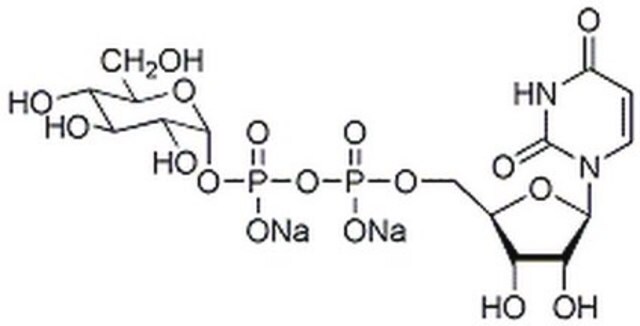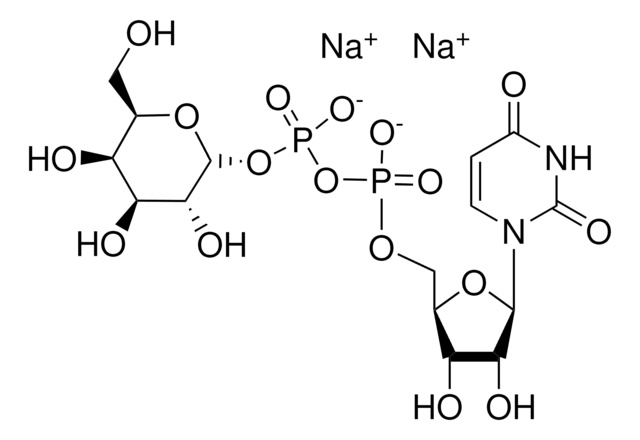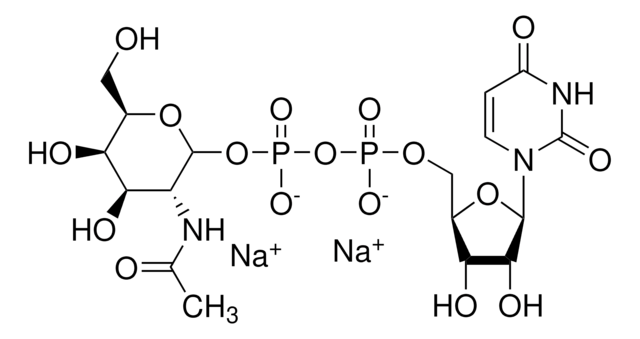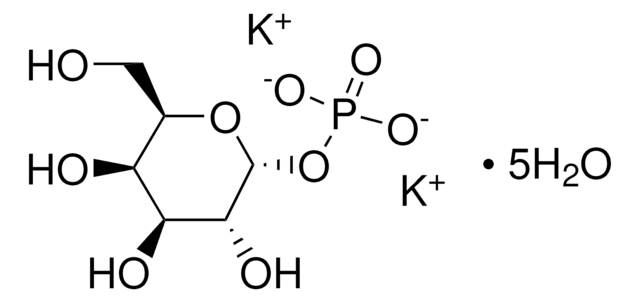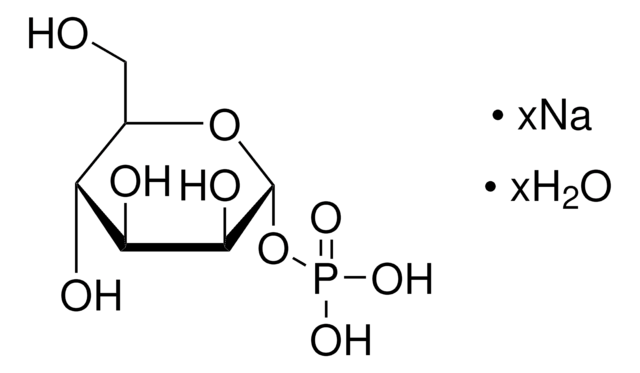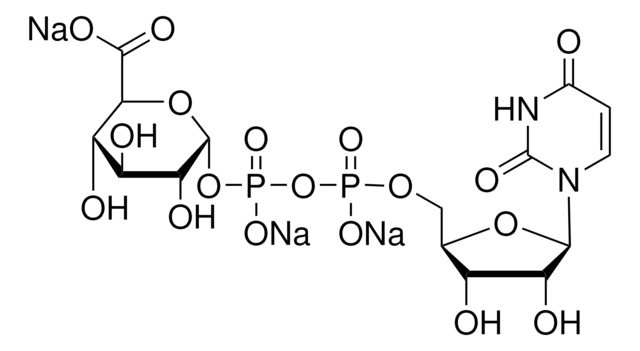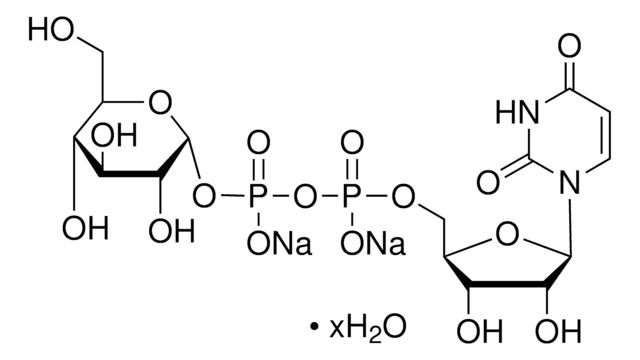G5131
Guanosine 5′-diphospho-D-mannose sodium salt from Saccharomyces cerevisiae
Type I, ≥97% (HPLC)
Sinónimos:
GDP-Man, GDP-mannose
About This Item
Productos recomendados
tpo
Type I
Nivel de calidad
Ensayo
≥97% (HPLC)
temp. de almacenamiento
−20°C
cadena SMILES
[Na].NC1=NC(=O)c2ncn(C3OC(COP(O)(=O)OP(O)(=O)OC4OC(CO)C(O)C(O)C4O)C(O)C3O)c2N1
InChI
1S/C16H25N5O16P2.Na.H/c17-16-19-12-6(13(28)20-16)18-3-21(12)14-10(26)8(24)5(34-14)2-33-38(29,30)37-39(31,32)36-15-11(27)9(25)7(23)4(1-22)35-15;;/h3-5,7-11,14-15,22-27H,1-2H2,(H,29,30)(H,31,32)(H3,17,19,20,28);;
Clave InChI
MEXITZOHWLXZKR-UHFFFAOYSA-N
¿Está buscando productos similares? Visita Guía de comparación de productos
Descripción general
Aplicación
Acciones bioquímicas o fisiológicas
Código de clase de almacenamiento
11 - Combustible Solids
Clase de riesgo para el agua (WGK)
WGK 3
Punto de inflamabilidad (°F)
Not applicable
Punto de inflamabilidad (°C)
Not applicable
Elija entre una de las versiones más recientes:
¿Ya tiene este producto?
Encuentre la documentación para los productos que ha comprado recientemente en la Biblioteca de documentos.
Los clientes también vieron
Artículos
The presence of multiple functional groups and stereocenters in complex carbohydrates makes them challenging targets for the organic chemist.
Glycosyltransferases were initially considered to be specific for a single glycosyl donor and acceptor, which led to the one enzyme-one linkage concept. Subsequent observations have refuted the theory of absolute enzymatic specificity by describing the transfer of analogs of some nucleoside mono- or diphosphate sugar donors.
Nuestro equipo de científicos tiene experiencia en todas las áreas de investigación: Ciencias de la vida, Ciencia de los materiales, Síntesis química, Cromatografía, Analítica y muchas otras.
Póngase en contacto con el Servicio técnico

